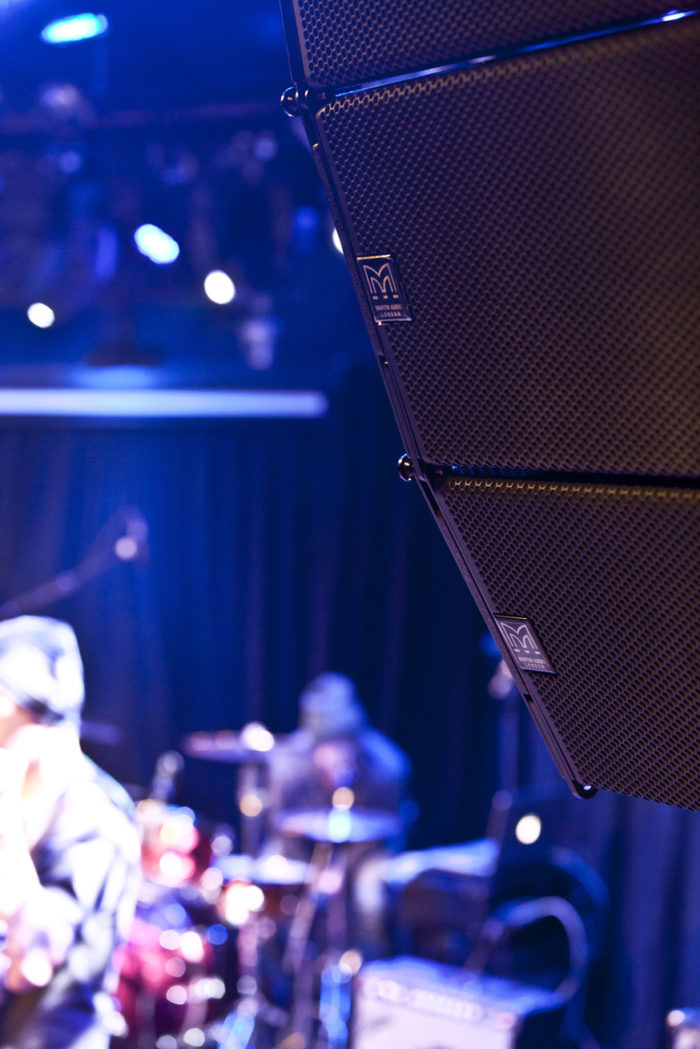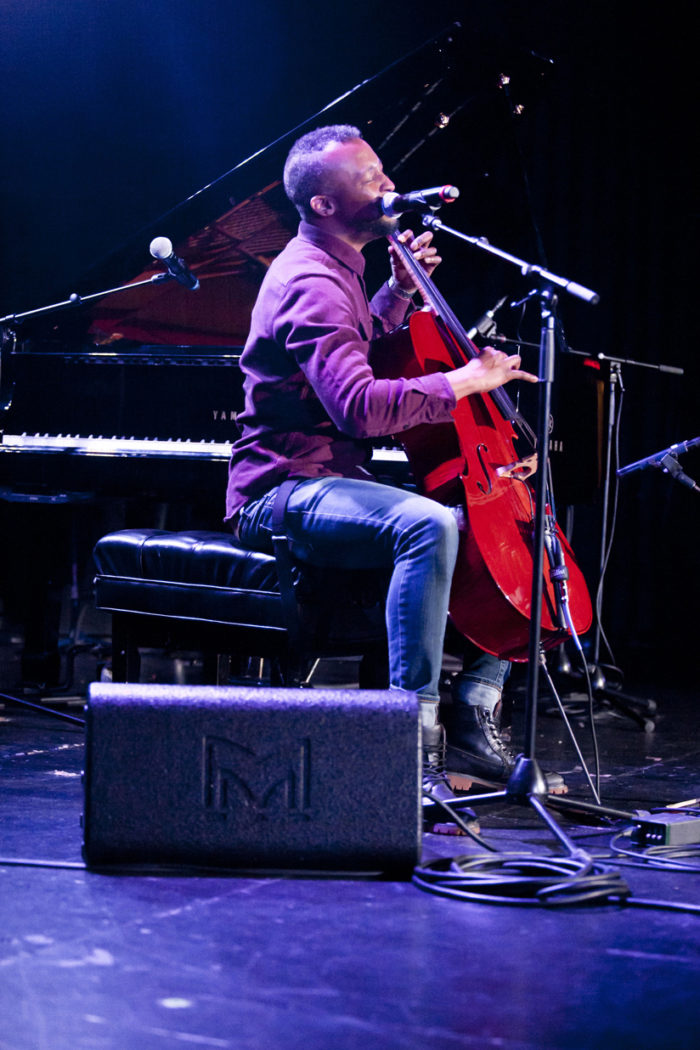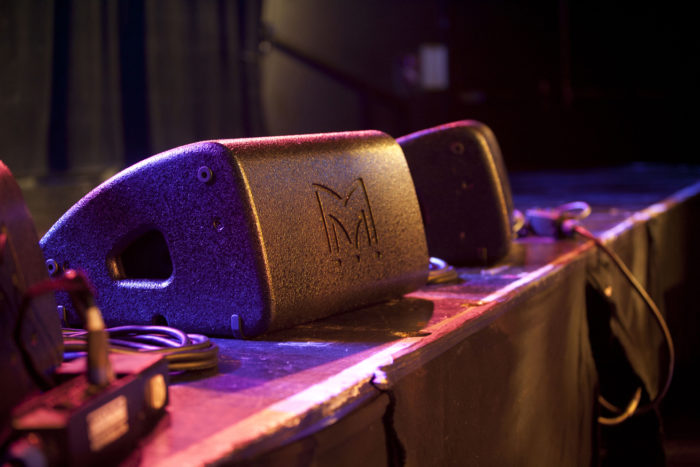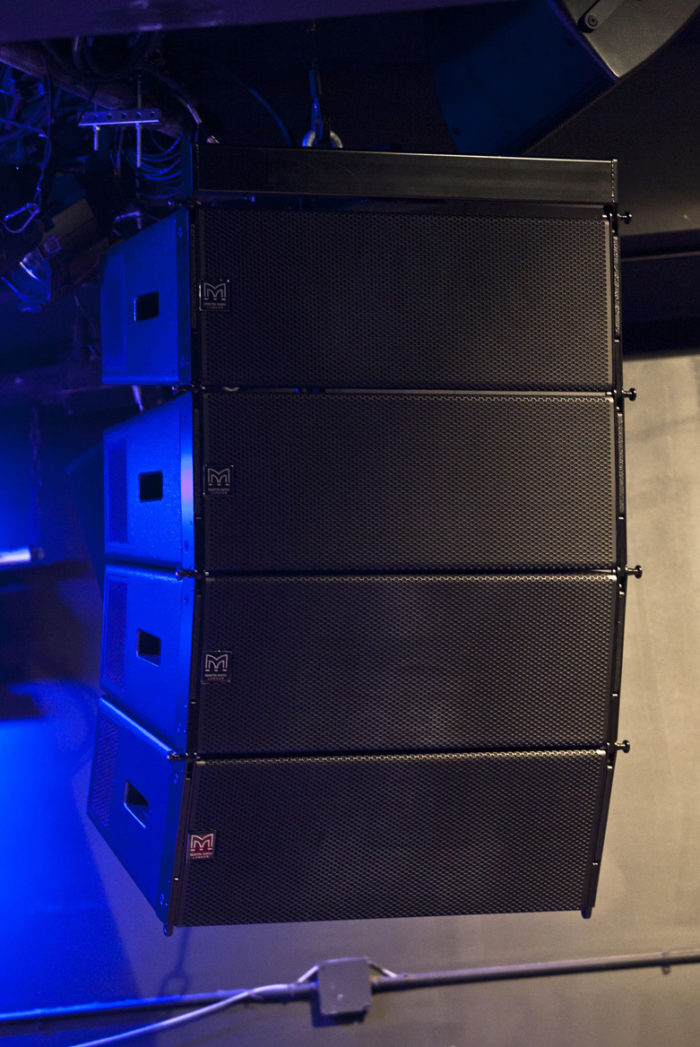 We caught up with our Director of Production (TD/PM) and Chief Audio Engineer Jay Eigenmann to ask him some questions about LPR’s new Martin Audio sound system. Read on to learn more! —LPR
We caught up with our Director of Production (TD/PM) and Chief Audio Engineer Jay Eigenmann to ask him some questions about LPR’s new Martin Audio sound system. Read on to learn more! —LPR
LPR: How would you describe the new sound system in a few words?
Jay Eigenmann: Insanely flexible and versatile—whisper quiet to blow your head off.
When you and the tech crew were installing the new system, it seemed like you all were here at LPR day and night working on it. What was that experience like?
It was definitely as you describe. Most venues take a little more time off to do an installation of this size and calibre, but we basically did our New Year’s Eve dance party on the old system then came back in the next morning and got started. We spent all of New Year’s Day taking down the entire old sound system and preparing the room for the new PA.
Then, starting at 6am on January 2nd until we opened the evening of Friday the 5th, our crew worked side by side with our installers, Frost Productions, round the clock to get the system in and up and running. We loaded in something like 40 pallets worth of gear on Tuesday morning, so it was definitely a feat—not to mention we got hit with a blizzard, so that was an unexpected challenge in terms of trucking logistics and also labor. I’ve done some install work before, and it’s definitely a get-your-hands-dirty type of thing, but with the scale, time crunch and other challenges, this was definitely one for the books. I may or may not have spent more than one night on a couch in the main space.
 What was it like to hear the new system for the first time after installing it?
What was it like to hear the new system for the first time after installing it?
To be honest, it had been in the making for over a year by the time we put the system into LPR. With all the research and time and energy carefully choosing the right products, then tweaking the design and all the arrangements to make it happen, it was definitely a huge cathartic moment just to be able to see the speakers in the air and hear them for the first time. I definitely had to pinch myself in a way, like,”Holy cow, this is real. It’s happening. It’s here…and it sounds awesome!”
What was the first thing that you listened to using it?
We definitely put the system through its paces when we first installed it and played almost every genre imaginable through it, but I think the very first thing we put through it was some Pink Floyd, which Jose Lima from Frost Productions decided to throw on.
 Martin Audio has been a huge fixture in the professional audio system game for a long time and David Martin, the founder of Martin Audio, designed rigs that Pink Floyd, the Who, Supertramp and others would take on the road, so that was definitely in tribute to the rich heritage of the rig we were putting up. I wasn’t around in 2008 when LPR christened its first PA, but according to our co-founder David Handler and our GM Brett Tabisel, Floyd was the first thing through the PA back then too, so I’m glad we kept up the tradition.
Martin Audio has been a huge fixture in the professional audio system game for a long time and David Martin, the founder of Martin Audio, designed rigs that Pink Floyd, the Who, Supertramp and others would take on the road, so that was definitely in tribute to the rich heritage of the rig we were putting up. I wasn’t around in 2008 when LPR christened its first PA, but according to our co-founder David Handler and our GM Brett Tabisel, Floyd was the first thing through the PA back then too, so I’m glad we kept up the tradition.
We heard something about the new system needing to be tuned. What does that entail? How does one tune a sound system?
So loudspeakers are all designed a bit differently these days with their manufacturers taking different approaches to design and construction, but most of the time regardless of how they get there, once a system is installed in a venue, its performance is “optimized”—tweaking equalization, volume, time alignment, etc. to get the best possible result for the specific venue and application. One tuning may not always work for every genre of music, which is the job of the technician working to adapt depending on the show, but the goal is getting the system sounding as close to “done” as possible before an engineer walks up to the mixing desk and starts to do his job.
There are lots of different ways to go about doing this—almost as varied as the types of loudspeakers out there—but generally it’s using a combination measurement equipment (measurement microphones that are purpose-made and acoustic analysis software), some math and physics, and your ears to make sure the system reproduces faithfully what you put into it, and all areas of the venue are evenly covered.
Martin Audio is known for their incredible sonic quality, but also for their coverage optimization. Their software, Display, allowed us to draw a computer simulated version of our venue, then electronically optimized processing of our sound system to provide us with the best possible coverage, frequency response (tonality) and fidelity for our venue.
 What’s possible now with the new system that wasn’t possible with the old system?
What’s possible now with the new system that wasn’t possible with the old system?
Our old system was no slouch by any means, and I think LPR already had a reputation for being a great sounding room, but honestly it’s hard not to notice the sonic improvement off the bat. There’s a crispness and clarity without being harsh to the new system that is evident immediately. A lot of people have noticed particularly in the vocals, where it’s most obvious. As mixers we don’t have to fight to push the vocals on top of a busy mix—you just let it sit in the mix where it should be, and the clarity is just astounding.
There is also an incredible amount of horsepower on tap, especially compared to before. There’s over a 100 watts of power per person for the main PA when we’re sold out (more when we’re not!), so that’s basically like saying there’s power equivalent to a Marshall full stack – per person in the room. So there’s definitely a ton of firepower and inevitably, headroom, in the system, which amounts to super clean sound at any volume—and the power to handle any sonic challenges our ultra varied programming throws at us. We certainly have made a massive upgrade in coverage, power, fidelity, and LOW END so I know bass heads, engineers, electronic and dub musicians will be particularly pleased. I know I am, as I’m a bit of a bass fiend myself. We now also have even more flexibility in how the system can be rearranged and re-networked for various configurations, with a number of roving speakers to fulfill needs like multi channel surround and additional low-end reinforcement.
 Can you tell us a bit about the history of Martin Audio?
Can you tell us a bit about the history of Martin Audio?
I mentioned already before that the company is a the brainchild of maestro David Martin in the early 70s in the UK. The company quickly became known for providing amazing audio reinforcement for the large tours of the day—a reputation it’s held since then. A lot of their products have reached legendary status in the pro audio world over the years, and there’s actually a super cool coffee table book on their website that gives a full look at their history with a bunch of interesting reading.
I want to say in the mid 2000s they took a step back and spent years developing the technology that would eventually make it into their MLA or Multicellular Loudspeaker Array products which first released in 2010 or 11 and rewrote the book on what a loudspeaker system could do in terms of processing and ease of tuning, setup and flexible application. It’s that same technology that has set Martin audio apart from other manufacturers, and the rest of the industry has been trying to play catch up since – most of the elements of that technology exists in our install friendly Wavefront Precision series system at LPR.
You’ll see the largest format Martin stuff go out on huge world tours with bands like Steely Dan and the Killers, which says something about the quality of their product and where they are in the professional audio market today. Also of note is that Martin Audio is also known for its versatility and gets a huge nod in the electronic music communities.
Anything else you’d like to add?
Not really—I think it’s an awesome thing overall. I do believe we are currently the only Martin Audio-powered music venue, certainly of our size, in the New York City area, which is pretty neat. It’s one thing to have something that sounds good that everyone has, but another to have something unique that sounds amazing. It’s an exciting time to be working on and attending shows at LPR. Come have a listen and experience it for yourself!
For more details on LPR’s new sound system, check out Martin Audio’s press release.

